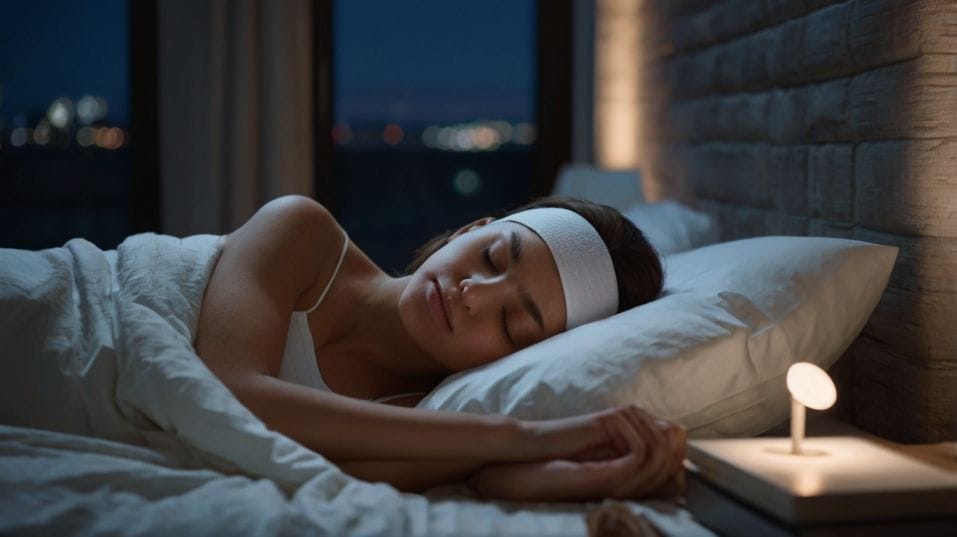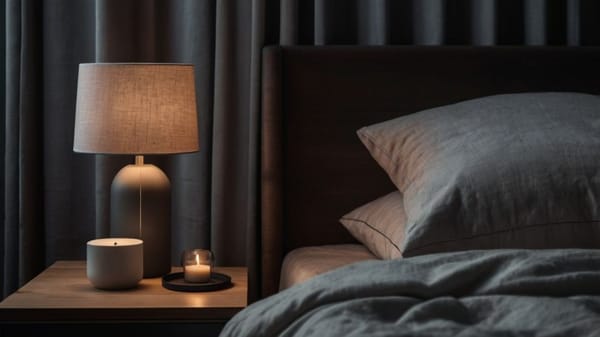The Science Behind Sleep Headbands and EEG Feedback
Discover how EEG sleep headbands boost deep sleep, energy, and recovery—using real brain data to help you wake up sharper and feel better fast.

What if your brain could tell you how to sleep better—while you sleep? You don’t need more hours in bed. You need better quality rest. That’s where EEG-powered sleep headbands come in.
These tools read your brainwaves in real time and guide you into deeper, more restorative sleep. No guesswork, no fluff—just science-backed feedback to help you fall asleep faster, recover smarter, and wake up actually feeling rested.
What EEG Feedback Is—and Why It Works
Let’s cut through the noise. Most fitness trackers and sleep apps rely on movement or heart rate to estimate your sleep stages.
That’s a decent starting point, but it’s not precise. Your brain is where sleep actually happens, and that’s what EEG (electroencephalography) measures—your real-time brainwave activity.
Different sleep stages show up as different brainwave patterns. Light sleep shows up as alpha and theta waves. Deep sleep, the kind that boosts recovery and immune function, is dominated by slow, high-amplitude delta waves.
REM sleep, critical for memory and mood regulation, brings faster, mixed-frequency brainwaves. EEG doesn't just guess what stage you're in—it shows the electrical fingerprints of those stages with clarity.
This kind of data used to be confined to clinical sleep labs. Now, wearable sleep headbands are putting it directly on your nightstand.

How Modern Sleep Headbands Use EEG
Today's sleep headbands are streamlined, comfortable, and tech-savvy. They typically use dry EEG sensors (no gel needed) and a compact design that slips on like a sweatband or soft wrap.
These sensors record your brainwaves through the night, sending that information to an app that breaks down your sleep cycles, duration, and quality.
But these headbands don’t just sit back and record—they actively help you sleep better.
Closed-Loop Auditory Stimulation
Some models use closed-loop auditory stimulation—a fancy term for sound cues timed to your brainwaves.
When your headband detects you’re in deep sleep, it plays soft pulses or pink noise at specific intervals to amplify your slow-wave activity.
Think of it like syncing up with your brain’s rhythm and gently reinforcing it. This technique has been studied in sleep labs and shown to significantly increase time spent in deep sleep.
Real-Time Neurofeedback
Other devices offer real-time neurofeedback. These use EEG readings during pre-sleep wind-down to guide your brain into a calmer state.
For example, if your brain shows excessive beta wave activity (associated with stress or alertness), the app may prompt you with calming audio or breathing cues to help shift you into a more relaxed alpha state—exactly what you want as you prepare for sleep.
Real Benefits, Backed by Research
You’re not using a headband just to geek out over sleep graphs. You’re using it to feel better. Here’s where EEG headbands shine:
- Faster sleep onset – By helping your brain downshift, some headbands cut down the time it takes you to fall asleep.
- Deeper, longer slow-wave sleep – That’s where growth hormone is released, tissues repair, and real recovery happens.
- More consistent REM cycles – Better REM improves learning, emotional regulation, and overall mental clarity.
- Smarter habit-building – With daily data, you get a clear picture of how things like late meals, workouts, or screen time actually affect your sleep. No more guesswork.
Making EEG Headbands Work for You—Without Changing Everything
Here’s what most people get wrong about sleep upgrades: they think they need to overhaul their whole lifestyle. You don’t. The key is layering the headband into what you’re already doing—and letting the data guide your next step.
Start by using the headband as a passive tracker. Get a baseline. What does your sleep look like now? Are you getting enough deep sleep? Is your REM scattered? Use the data to identify your weak spots.
Then begin making small adjustments. Go to bed 30 minutes earlier. Cut caffeine after noon. Test how alcohol affects your brainwaves (spoiler: it usually tanks deep sleep).
As you fine-tune your routine, your headband will reflect the changes in real time. You’re no longer relying on vague advice—you’re optimizing with hard numbers. And the best part? You’re doing this while you sleep. No effort, no willpower drain.
Building a Smarter Sleep Routine Around EEG Insights
Once you start seeing patterns, the next step is to build a nightly routine that supports your brain's natural rhythms. Here’s what works well when paired with EEG feedback:
Keep a Wind-Down Window
Use the hour before bed to send a clear signal to your brain: “It’s time to shift gears.” Dim the lights. Drop the screen brightness. Listen to calming music or do some gentle stretching.
Anchor Your Wake Time
Consistency matters. Even if your sleep isn’t perfect yet, waking up at the same time every day trains your brain to regulate melatonin and cortisol naturally.
Stack Feedback With Breathwork
Some headbands offer built-in breath training to lower brain arousal. Use this before bed if you’re wired or anxious. You’ll learn to associate the device with calmness and better sleep.
Why This Tech Isn’t Just for Sleep Nerds
This isn’t about becoming a quantified self fanatic. It’s about using smart, accessible tech to solve a problem that most people just live with: not sleeping well.
And when you sleep better, everything gets easier—workouts hit harder, focus sharpens, and your energy doesn’t crash mid-afternoon.
Sleep headbands don’t replace healthy habits—but they amplify your results by helping you stay aligned with your brain’s natural patterns. No more trial and error. Just sleep science, on your side.
Final Thoughts
Better sleep doesn’t take more effort—it takes better information. Sleep headbands powered by EEG give you that edge.
They track your brainwaves, help guide your mind into deeper sleep, and give you daily, personalized feedback to help you recover smarter and feel sharper.
Don’t overthink it. Start small. Pick a headband, wear it tonight, and check your results in the morning. You’ll know exactly where your sleep stands—and how to improve it.
No more guessing. No more dragging through your days. Better sleep starts when you make it a priority—and the best time to start is tonight.




